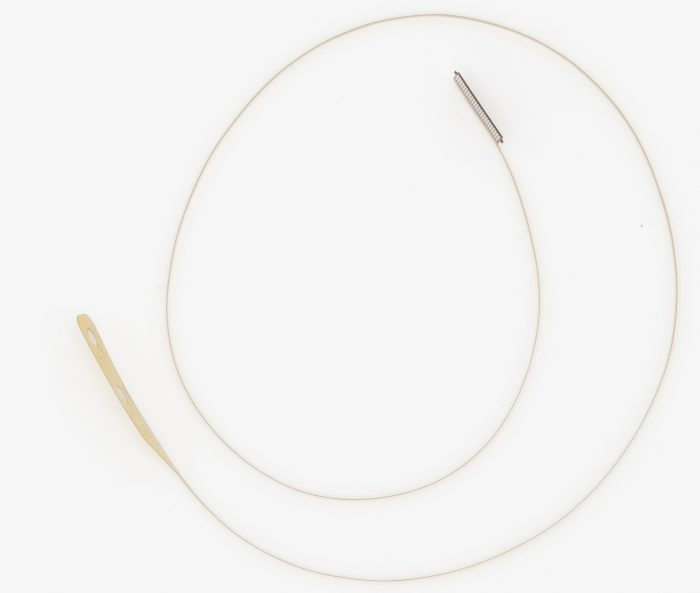Epilepsy affects more than 3 million people in the United States and is the fourth most common neurological disorder. It is a spectrum condition which means it affects each person differently but is characterized by unpredictable seizures. A seizure is a sudden rush of electrical activity in the brain. Seizures can be managed with medication for about 60% to 70% of people.
When someone’s seizures can’t be managed by medication, they are diagnosed with ‘drug resistant epilepsy’, also known as refractory epilepsy. A few options to control seizures for refractory epilepsy include diet changes or surgery. A surgical option may be to remove the area of the brain initiating the seizure, an ablation of the brain tissue initiating the seizure, or an implant of a stimulation device that sends electrical signals to the area of the brain initiating the seizure.

Success rates for seizure freedom one year after surgery range from 50% to 70%. Only about 25% of people who experience seizure freedom can discontinue their seizure medication. Physician feedback suggests the success rate can be improved by providing better electrodes to precisely pinpoint the problem area to guide the treatment of the patient.
Just a Quick Note:
InnovationsOfTheWorld.com has partnered with Trade License Zone (TLZ) to support global innovators looking to expand internationally. Take advantage of the UAE’s Free Zones—enjoy streamlined setup, low corporate taxes, and a strategic gateway to the Middle East and beyond.
Get Your UAE Free Zone License Fast & Easy!Our initial products are designed to monitor, record and stimulate electrical signals on the brain’s surface. They are used to identify seizure onset areas for epilepsy, brain mapping for language and motor function, and interoperative monitoring of the brain’s surface.
The brain is the most complex organ in the human body. There are over a billion neurons traveling around the brain’s neural network and they drive our actions, thoughts, feelings, and memories. The brain’s neurons interrupt signals from the other areas of the nervous system.
Any disruption or interrupted signal in neural communication can be detrimental. In addition to the brain surface electrodes, we are working on innovative solutions for the broader nervous system. The neuroscience field is rapidly expanding, and we are in the forefront with solutions to improve neural network function and control of neuron activity throughout the nervous system.
Our vision is to improve people’s control of their neurological disorders by providing personalized flexible electrodes designed to monitor and deliver therapy to highly specific areas of the nervous system.

Our thin film electrode technology is the result of years of research by neuroscience engineers, neurosurgeons, and neurologists from the University of Wisconsin and The Mayo Clinic, whose passion is to bring thin film printed electrode circuit technology to clinical use. Our partners, many of which are affiliated with leading medical institutions in the United States, are experts in neuroscience technology, and we continue to work in close collaboration with them. Together we are developing high-definition, minimally invasive diagnostic and treatment devices based on our unique thin film electrode technology. Our initial focus is on epilepsy and the fast-growing neurostimulation device market. We have built an experienced management team, world-class board of directors, and assembled impressive scientific and artificial intelligence advisory boards.
We are the first thin film electrode manufacturer to receive FDA clearance to commercialize an electrode to monitor and stimulate the brain for short term applications. Our Evo™ Cortical Electrode is used in electrocorticography procedures to record electrical brain activity and stimulate brain tissue after being surgically placed on the surface of the brain. The electrode system includes an electrode and a disposable cable assembly which connects to a separate monitoring system. The Evo Cortical Electrode portfolio is comprised of strips and grids with a variety of contact configurations for placement on targeted areas of the brain as determined by the physician.
We believe our Evo Cortical electrodes will be able to be placed with minimally invasive procedures to reduce surgical complications and eliminate the need to create a standard craniotomy. Additionally, we believe that the lower impedance in our electrodes and our ability to create high density electrode arrays could enhance artificial intelligence research into areas such as artificial neural networks and new algorithm development.
We aim to revolutionize the standard of care for patients suffering from conditions such as epilepsy, Parkinson’s disease, dystonia, essential tremors, back pain due to failed back surgeries and other related nervous system disorders. We will expand our thin film electrode portfolio beyond recoding and short-term stimulation. We are exploring permanent electrodes that provide stimulation for chronic conditions. We are also investigating combining our electrodes with surgical treatments such as ablation of brain tissue. This approach would offer the potential to reduce the number of surgeries a person needs to endure.
We will continue to investigate complementary technologies which align with our strategic plan. We are well positioned to provide innovative solutions to propel the expansion of artificial intelligence in neuroscience.














